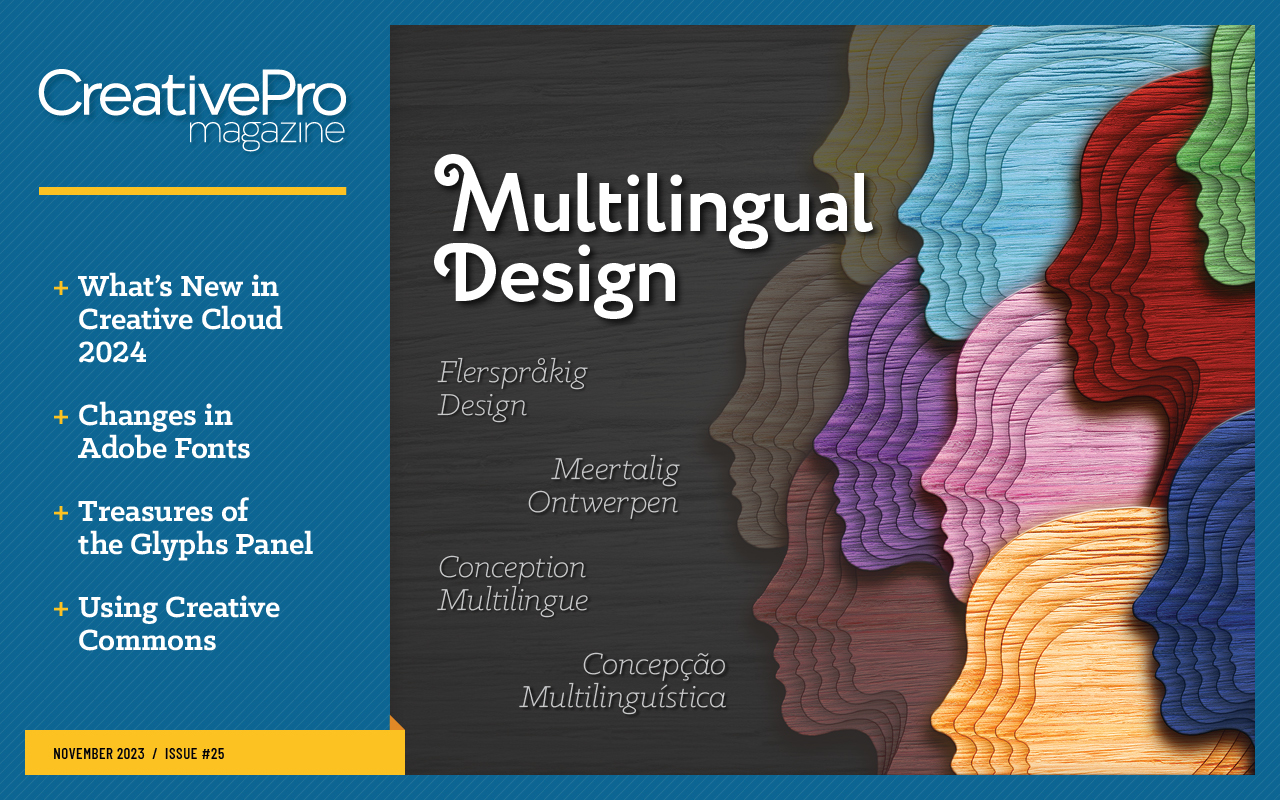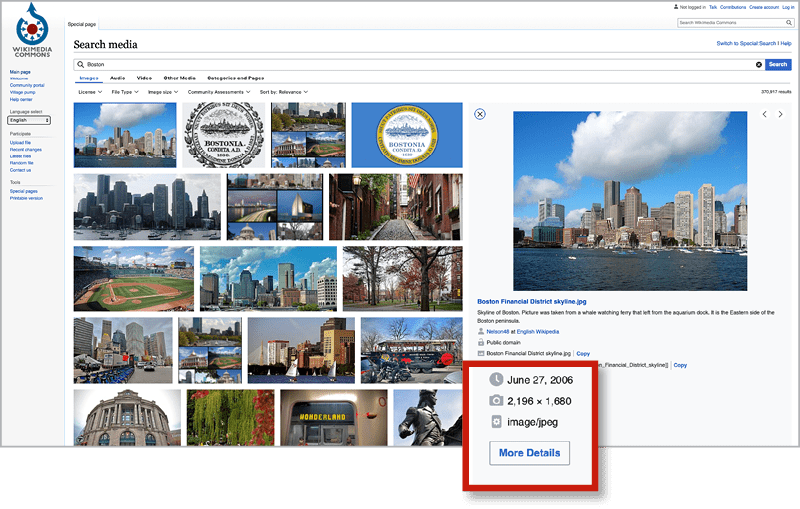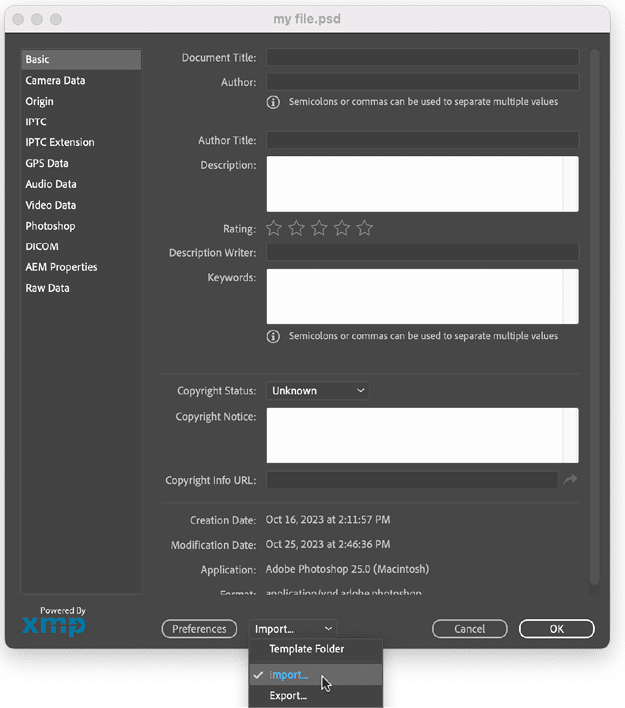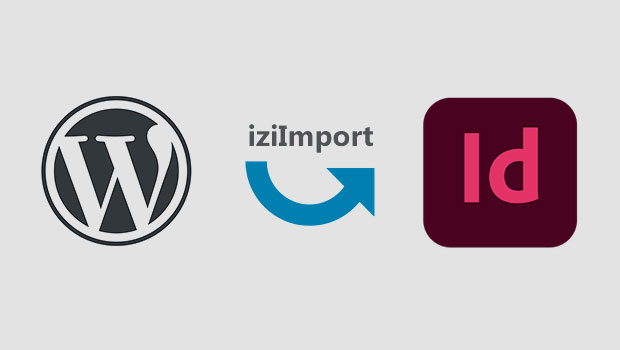Using Creative Commons Images in Professional Work
Understanding the power (and pitfalls) of Open Source content

This article appears in Issue 25 of CreativePro Magazine.
If you’ve ever read Wikipedia or watched a TED Talk video, you’ve benefited from media that was shared under a Creative Commons license. You can find amazing content—images, 3D models, video, software, news, stories, databases, even whole academic courses—all available free.
Creative Commons—CC for short—offers a very simple way for creators to grant blanket advance permission for others to use their creative work, all while setting conditions and affirming their intellectual property rights.
By applying a certain type of Creative Commons license, creators can decide whether to permit others to use this material in commercial work, or limit its use to noncommercial contexts. They can decide to let others alter it—crop an illustration, remix music, apply effects to or change the colors of a photo—or prohibit reuse that transforms the original.
The Creative Commons licenses are the brainchild of a nonprofit organization of the same name, which, since 2002, has aimed “to overcome legal obstacles to the sharing of knowledge and creativity,” according to the organization’s website. It continues, “Our licenses enable collaboration, growth, and generosity in a variety of media.”
Creative Commons gives copyright holders more choices about how their work can be used and to give users an easy way to find material that can be used as legally as it can be used creatively.
The organization took shape in response to two trends: Governments were enacting increasingly restrictive copyright laws, and online creators, taking advantage of newly available digital media, were remixing and redistributing creative content, often unwittingly flouting the law in the service of creative vision. Now, nearly 2 billion works are covered by CC licenses, and there is widespread acceptance for them in jurisdictions around the world.
In this article, we’ll
dive into the details of these licenses, as well as the benefits and risks associated with them, to help you decide if and how to incorporate Creative Commons content into your work.
Creative Commons Licenses
A CC license has three parts, called layers. One layer is for lawyers and is written in legal language, another layer is for everyone else and is written more plainly, and the third layer is intended to be read by machines (Figure 1).

Figure 1. Creative Commons licensing comes in three layers, each intended for a different purpose: legal enforcement, human communication, and machine readability.
There are currently six types of CC licenses which let the creator—legally, called the licensor—retain some rights:
Attribution (CC BY): Anyone can distribute, remix, adapt, or build on the work as long as the original creator gets credited. Even for commercial use.
Attribution-ShareAlike (CC BY-SA): This allows all the uses above and requires a credit for the creator, but also requires that the resulting work will have the same license. Commercial use is permitted.
Attribution-NoDerivs (CC BY-ND): Works with this license can be reused but can’t be altered. Credit is required, and commercial use is okay.
Attribution-NonCommercial (CC BY-NC): Anyone can remix, adapt, or build on this work. New work must credit the original creator. However, you cannot use these works for commercial purposes.
Attribution-NonCommercial-ShareAlike (CC BY-NC-SA): Anyone can remix, adapt, or build on the original work as long as they credit the creator and license the new work with these terms. Not for commercial purposes.
Attribution-NonCommercial-NoDerivs (CC BY-NC-ND): Works covered by this license can be downloaded and shared, but not remixed or altered in any way. The original creator must be credited, and no commercial use is permitted.
In addition, one type of license releases all rights to a work into the public domain: CC0 or “No Rights Reserved.” This license is used when creators want to waive any copyright that might be automatically granted.
Finding Images
Libraries like Openverse, Flickr, and Wikimedia Commons can be rich resources for images and more. But there are some risks involved, as I’ll explain later on.
Openverse
Openverse indexes more than 600 million works that are free to use (Figure 2). These include stock photos, artworks, video, and audio, aggregated from works hosted on other websites like Flickr or StockSnap.

Figure 2. The Openverse search engine lets you discover Creative Commons–licensed material from multiple sources.
On Openverse, you can even find collections shared by cultural institutions, like this tugboat painting (Figure 3) shared by the Smithsonian American Art Museum.

Figure 3. Antonio Jacobsen, The Ocean-Going Tug “May McWilliams”, ca. 1895, oil on canvas, Smithsonian American Art Museum, Museum purchase, 1966.83
In 2021, Openverse’s search functions were integrated into WordPress, the open-source web development platform and software, making Creative Commons–licensed content easy to integrate into website content.

Flickr
Flickr, an online photo-sharing platform, lets you filter your search results by multiple licenses, including all Creative Commons licenses.
Flickr has a great advanced search experience. You can search by subject and by license, and then filter for images that can be adapted and used commercially (Figure 4). Furthermore, you can select from photos, illustrations, or artwork from other media that has been digitized, like drawings or paintings. You can then filter those selections by the type of file you want, preferred aspect ratio, image size or image source.

Figure 4. Flickr can filter results, limiting them to those tagged with different Creative Commons licenses.
To download an image, you must have a Flickr account.
Wikimedia Commons
Images on Wikipedia and Wikimedia Commons are available for use. Their image use policy states that media on the open-source web-based encyclopedia “should be as ‘free’ as Wikipedia’s content—both to keep Wikipedia’s own legal status secure and to allow as much re-use of Wikipedia content as possible.”
Many Wikimedia images use CC licensing. If you see an image on any Wikimedia site that you would like to use, click the image. You’ll be directed to the media viewer with information about the image, including licensing (Figure 5). If you click More Details, you will be able to download the image, usually in a range of sizes.

Figure 5. Click More Details in your Wikimedia Commons search result to navigate to a page where you can download various sizes of the file or see the metadata for an image included in the free online encyclopedia’s digital archives.
Attribution and Linkbacks
Most CC licenses require that you give credit to the licensor, add links to the original work and the creator’s website, and specify the license attached to the work. Often you must also link back to the human-readable version of the license. This is called attribution, and the CC wiki gives examples for attribution across media.
Sometimes the creator or institution sharing the work will specify a caption. For instance, the Smithsonian specified the caption for the tugboat painting shown in Figure 3.
Potential Pitfalls
These sources for Creative Commons media can be an amazing resource for designers to get creative and collaborative with others’ work. But using them is not without risk.
The bottom line: I believe those of us who can’t afford lawyers should be very, very careful when using CC-licensed work. Here are a few potential pitfalls to watch out for.
It’s not their work
Sometimes the work uploaded to sites like Flickr wasn’t uploaded by the original creator. Anyone can apply a CC license to any work. There is no mechanism for checking that the person actually has the right to do so. If you use work that was licensed and shared by an impostor, you could get a cease-and-desist letter or worse from the real creator.
Licensing changes
CC licenses cannot be revoked, but a creator can change licensing at any time. For example, Flickr members can change how their images are licensed, and Flickr will display the license history for an image. Creative Commons warns that this can lead to confusion and undermines the advantages of having uniform accepted licensing.
Anyone who already has a copy of the work can still use it as per the original terms. However, if you are using a CC-licensed image and the creator has changed their mind about distribution or doesn’t like your use of their work, they can ask you to remove it.
Misunderstandings
Some terms in CC licenses are not precisely defined, particularly NC for noncommercial. What does it mean to profit from the use of someone’s image?
Also, if you license an image with a recognizable person, must you also get permission from that person to use their image? Virgin Mobile was sued in 2007 for using a Creative Commons–licensed photo downloaded from Flickr because it included a teen’s image without her consent.
Bait-and-switching and trolling
Some people have deliberately uploaded an image that isn’t covered by a CC license and waited for the opportunity to demand payment or sue for damages. This is sometimes known as copyright trolling.
In one 2019 case, a photographer used an image from the site Unsplash that was listed as having a CC0 license. He still got a copyright infringement notice. After he got the notice, the photo and license information disappeared from Unsplash. Another 2019 case involved a photographer whose business model seems to be suing people who do not follow CC attributions to the letter.
Offering Your Own Work
Interested in sharing some of your own work with a Creative Commons license? Here’s how to go about it.
Choose a license
The first step is to understand your options and decide if your work can be licensed. You can find helpful explanations and links here. Then, go to the Creative Commons Share Your Work page and click one of the text links to the License Chooser. You will decide which rights you’d like to retain as you fill out as much of the metadata as you like.
Next, select which machine-readable technology is a best fit; choose HTML+RDFa for a webpage or XMP to embed in the file itself.
You can download code to use on your website or sharing platform that corresponds with your choice from this Wikipedia page, which offers step-by-step instructions and examples.
Add license information in Photoshop
To add the license to an image’s metadata, open the image in Photoshop. Choose File > File Info.
At the bottom of the File Info panel, choose Import from the menu (Figure 6). Navigate to the XMP file you downloaded, and click Open. Choose Keep original metadata, but replace matching properties from template. This will change the image rights to your new CC license but will leave the other metadata untouched.

Figure 6. Use the Import command in the File Info dialog box to add a license to an image.
Is CC Licensing a Viable Model for Creative Pros?
Some open access publishers find CC licenses useful. For example, the Open Access Scholarly Publishers Association requires the use of CC licenses, “not only because they are very well-established legal tools, but also because they have the benefits of simplicity, machine-readability, and interoperability.”
In the end, each individual creator will have to decide if CC licensing is right for them.
For example, early-career librarian Kestrel Ward collaborated on an open-source handbook for academic library workers. They believe the combination of Creative Commons licensing, open access publishing, and open source publishing software gives them an opportunity to get credit for their writing.
Don Watkins, a photographer and educator, believes that Creative Commons licensing can be a tool for building your brand. He finds that increased exposure can position you as a thought leader in your field and that sharing your work can lead to innovations and collaboration. He believes a CC license insures that creators can specify some control over how their work is used, while still contributing to the greater good of the creative community.
However, cartoonist and filmmaker Nina Paley soured on the experience when she released her film Sita Sings the Blues under a CC Attribution-ShareAlike license. Others downloaded and re-released her film with a different license that didn’t preserve her ShareAlike restriction. She believes that most people don’t take the time to understand CC licenses.
Mix (or Remix) Caution with Creativity
The internet has challenged traditional models of rights ownership and compensation for professionals. Creative Commons licensing, when it works as intended, fosters collaboration while giving creators some control over their work.
However, it’s also clear that even when it looks like works are in the public domain, there can be legal complications. To benefit from the vast number of images and opportunities that Creative Commons licensing has generated, proceed with caution as well as creativity.
Commenting is easier and faster when you're logged in!
Recommended for you

How to Find and Fix Partially Italic Words with GREP
You can banish incomplete italics fast with Find/Change and the clever use of a...

InReview: iziImport
Get to know a solution for placing web content into InDesign layouts for cross-m...

The FX Files
An investigation of the 9 kinds of graphic effects you can apply to objects in y...




